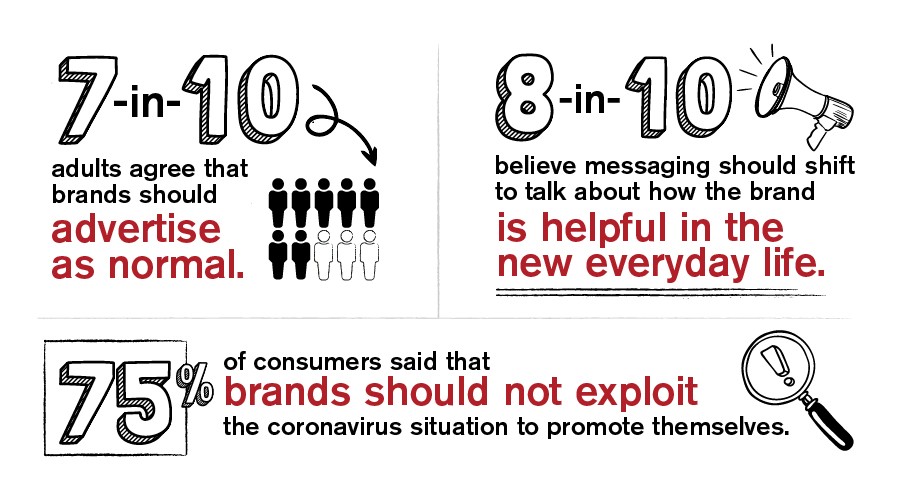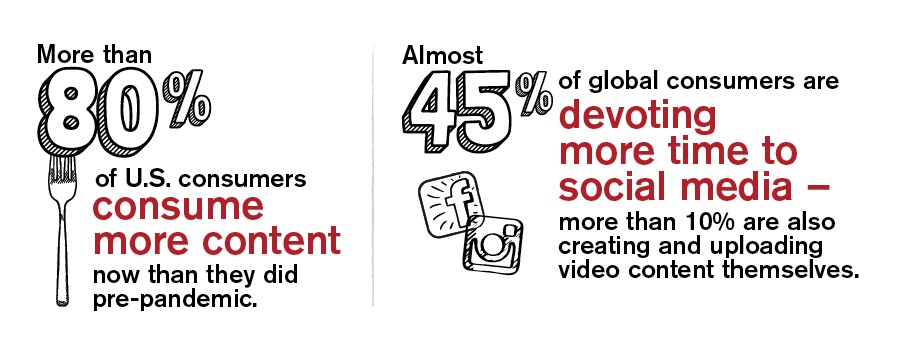During a time of little certainty, consumers are looking to brands to provide them with some sense of normalcy. At FARM, our team is observing changing consumer behaviors. As marketers, it is important we continue to monitor these changes, analyze the data, and adapt our strategies as we go.

Seven-in-ten adults agree that brands should advertise as normal, while closer to eight-in-ten believe messaging should move to “talk about how the brand is helpful in the new everyday life,” according to a study done by Kantar. This data helps to illustrate that brands should be pivoting their advertising strategies.
More than just altering messaging, it is important to adjust channel strategy to current behaviors, and potentially beyond. Habits created during COVID-19 will likely have lasting effects on the ways we consume media.

One thing that seems universal is that we all have a lot more time on our hands, with more than 80% of U.S. consumers saying they consume more content now than they did pre-pandemic. The medium that has been the source of much of that boost is video content, appearing in many different forms. Online videos, connected TV/streaming, video games, and social video have all seen an increase.
Platforms like YouTube and TikTok have emerged as primary mediums among younger generations, acting as a source of comic relief with videos or memes. We’re streaming more music, more television, and more movies, but it’s important to note that other content has also seen a jump.
Things falling under the categories of inspirational or health focused, along with cooking and recipe-related content, as well as mindfulness and well-being related apps have seen a spike in users. And while media consumption habits have changed for the majority of us, Baby Boomers are one group among age cohorts who have appeared to change their media habits the least, with the biggest change being an uptick in traditional TV viewing.
As far as devices go, basically everything that connects to the Internet has seen more usage, with the biggest increase being smartphones and connected TVs. But while we are seeing these boosts, with a very engaged, captive audience, digital ad spending is down. However, analysts are already nudging digital ad spending forecasts ahead for 2021, in anticipation that many services that have been purchased during this time will continue growing.
Check back for more insight as we continue to keep a pulse on the ever-changing digital landscape, and how you can reshape your marketing strategies to best serve your audiences.
To learn more about how FARM can help you adapt to changing consumer behaviors, drop us a line! We’d love to have a conversation.



